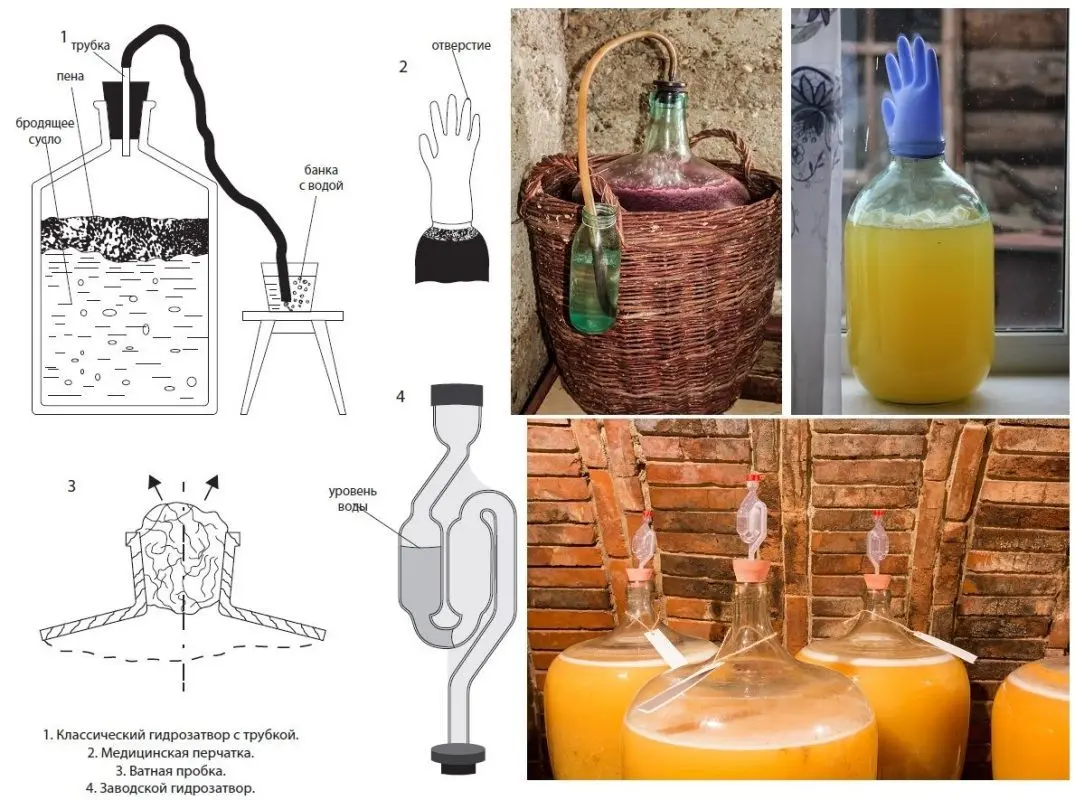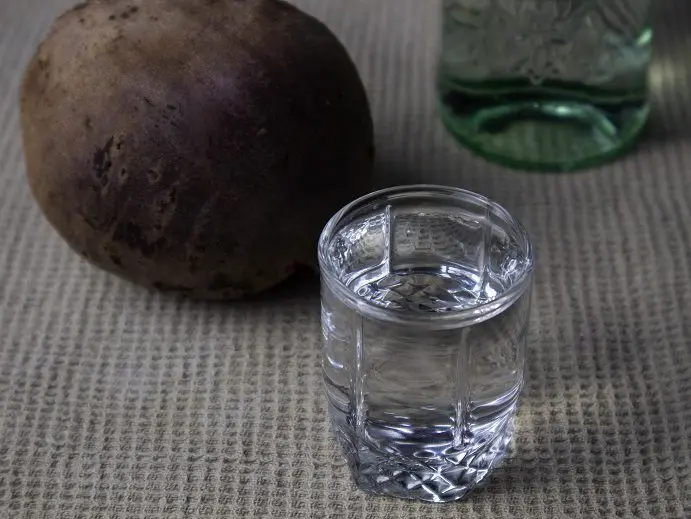Theoretically, due to the high sugar content of beets, you can make a lot of cheap moonshine. But in practice, moonshiners are faced with the problem of a sharp unpleasant odor and poor quality distillate. Getting good or at least average beet moonshine is not as easy as it seems, but it is possible.
In Ukraine, a similar drink is called “buryachikha” (in Ukrainian, the word “beet” is translated as “beetroot”). In Russian villages, unrefined moonshine from beets, brewed according to conventional technology on a handicraft apparatus, is deservedly called “kosorylovka”. It quickly intoxicates and causes a terrible hangover in the morning.
Only the correct technology for preparing beetroot mash and subsequent fractional distillation minimize the ingress of harmful substances into the finished product. The method is complex and time-consuming, but the output is moonshine of acceptable quality.
Ingredients:
- sugar beet – 5 kg;
- water – 10-15 liters;
- dry yeast – 50 grams (250 grams pressed).
Depending on the variety and growth conditions, the content of sucrose in sugar beet is 8-20%. This means that theoretically, from 1 kg of raw materials, you can get 85-210 ml of moonshine with a strength of 40 degrees. The practical yield is 12-15% lower than the theoretical one, so it does not always make sense to “bother” with cooking.
Beetroot mash recipe
1. Wash the beets thoroughly, be sure to remove the peel. Cut the pulp into small pieces.
2. Grind the pieces on a grater or twist in a meat grinder.
3. Pour the resulting slurry (together with juice) into a large saucepan, dilute half with water, mix.
4. Put the pan on the stove and bring the mixture to a boil. Stir occasionally so that the pulp does not burn.
5. Boil for 60 minutes, turn off the heat, cover and leave for 3-4 hours.
6. Strain the cooled beetroot mass through 3-4 layers of gauze or a dense cloth, squeeze the remaining thick pulp well with gauze or a press.
7. Pour all the collected juice into a saucepan and cook over medium heat until thickened.
8. Cool the finished syrup to room temperature, then pour into a fermentation tank, dilute half with water and add the yeast diluted according to the instructions on the package. Mix well.
The container will be filled to a maximum of 75% of the volume to leave room for foam and carbon dioxide.
9. Install a water seal of any design on the container (you can use a glove with a hole in the finger). Move the mash to a dark, warm place (18-25°C) and leave for 6-11 days.

10. After the fermentation is over (the water seal has stopped gurgling, the mash is unsweetened and slightly bitter, sediment has appeared at the bottom), drain the beet mash from the sediment into the distillation cube.
Obtaining moonshine from beets
11. Braga to overtake on a moonshine still of any design without separation into fractions. It is desirable that there is a steamer, in which I advise you to put a few mint leaves or orange peel. This will reduce the unpleasant beet smell. Finish selection when the strength in the jet falls below 30%. Determine the amount of pure alcohol (multiply the volume by the percentage of the fortress and divide by 100). Dilute the distillate with water to 20 degrees. Optionally clean with charcoal or other methods.
12. Make a second distillation. The first 15-20% of the yield from the amount of pure alcohol is collected separately and poured. This is the “head” – a fraction containing harmful substances that can only be used for technical purposes. Withdraw the main product (“body”) until the yield drops below 50%. Then finish the run. “Tails” – the alcohol remaining in the cube, no one needs.
13. Dilute the resulting moonshine with water to the desired strength (40-45 degrees). The characteristic smell remains, but it will not be as sharp as in the classic “kosorylovka”.










